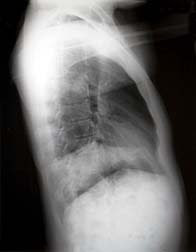
A recently published article about the genetic affect of asbestos exposure has offered insight into the development of asbestos-related diseases. The scientific study, published in the September issue of BMC Genomics, may be significant in helping to diagnose and treat asbestos-related diseases.
In the past, scientists have studied the genes involved in the body’s response to asbestos, but have not seen much success. This is largely due to the complexity of the body’s response to the toxin.
Scientists of the recent study employed an approach called “systems biology,” which takes a more holistic observation of biological processes. Instead of studying one gene, many genes are analyzed for a more systemic observation. The scientists used this approach to generate a comprehensive view of what happens in human lung epithelial cells when they are exposed to crocidolite asbestos.
A robust and comprehensive set of data was generated, which documents the genetic changes in a certain section of DNA—changes that may be involved in the development of asbestos-related disease.
The genes studied serve functions in a range of important cellular processes, including the cell cycle, cell death and growth, proliferation, gene expression, and the development of cancer. A mutation or error in any of these processes can lead to the growth of cancers.
Through studying these genes and the effects of crocidolite asbestos, the scientists have noted a complex interplay among the genetic responses to asbestos. The study identified several genes that may be pivotal in controlling how cells respond to asbestos.
Insight into these genes could offer hope to many people suffering with asbestos-related diseases such as asbestosis and mesothelioma cancer. Mesothelioma is an aggressive form of cancer that most commonly affects the lining of the lungs. Caused almost exclusively by exposure to asbestos, malignant mesothelioma currently has no cure.
Mesothelioma treatment options often result in palliative measures since curative methods have little to no positive effect on the development and spread of the cancer. Typical treatment options include surgery, chemotherapy, and radiation therapy.
Though six forms of asbestos are now regulated, the mineral has still not been banned in the United States. Thousands of people are still diagnosed with mesothelioma and other asbestos diseases every year, and many experts say the incidence rate has yet to peak. Mesothelioma has a latency period of two to five decades, which means people exposed in the 1970s and even earlier may be at risk of developing the cancer even though they appear healthy.
The recent study is undoubtedly the first to take a function-based global approach in the reaction of human lung epithelial cells to crocidolite asbestos. The scientists of the study report their work is an important resource for future research into asbestos genetics and is a valuable base on which to build further study.
For more information, visit Mesothelioma Cancer Center
(Source)


